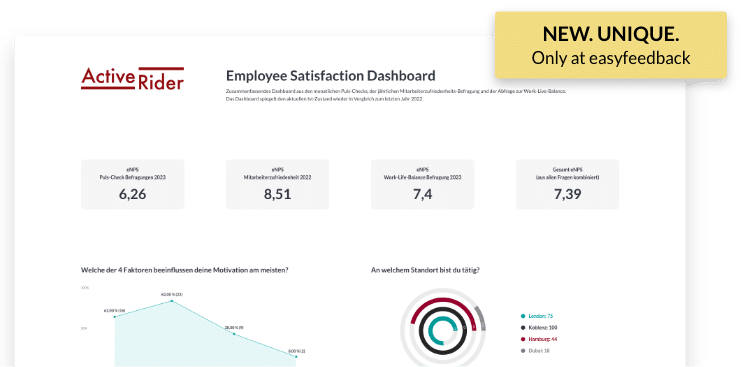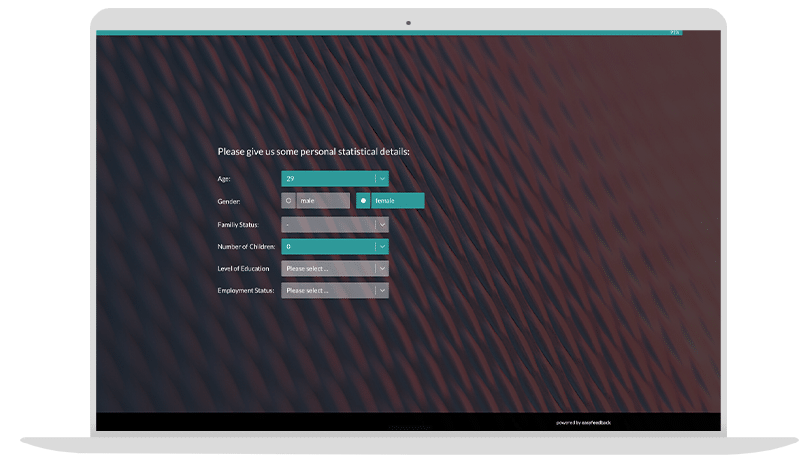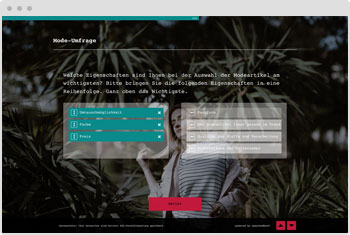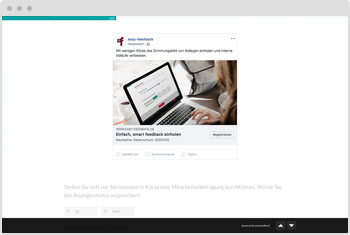Determine the customer's needs before product development with market research

With this ready-to-use survey template, you can get quick feedback and incorporate it into the development of a product or service.

“Identifying customer needs is an essential part of our business. easyfeedback accompanies us for many years as a loyal partner in this task. We particularly appreciate the intuitive usability of the survey tool as well as the professional support.”
Guild Lead User Experience Research
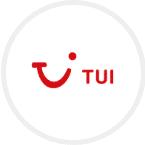
“We use easyfeedback for internal and external surveys – fast, comfortable and really easy! Straightforward and cordial support can always create a smile. We really appreciate the permanent development of the platform.”
Guest & Competitor Insights Analyst
Content and targets of this market research template
Would you like to know what the customer wants before launching your product or service? A systematized customer survey based on prototypes or designs can give you the insights you need.
Start with your personal product & market research. Ask your customers about their wants and needs. Before finalizing your product or service, determine the key features that will make it a sales hit.
Content:
• Do customers like the product
• Would customers be willing to pay a profitable price
• Is a profitable offer even possible
• Which design do customers like better
Targets:
• Present marketable products
• Faster achievement of the product-related break-even point
• Longer product life cycle
• More satisfied customers
• Market research for new product ideas

Data privacy protection „made in Germany“ (GDPR)

Anonymity functions for open feedback
Almost everything you need to know about market & product research
1. What is market research?
Market research is a tool used to systematically investigate current market conditions.
Information and data are collected, processed and analyzed using various research instruments. This information is used, among other things, to get to know the market, industry and target group better and thus to develop a successful sales strategy. Discovering trends and opportunities for niche products or reducing the risk of entrepreneurial decisions can also be objectives for the use of market research.
2. What are the goals of market research?
Basically, market research is carried out in order to get to know markets, products as well as involved actors (competitors, suppliers, target group, etc.) in more detail and to collect information and findings relevant for decision-making.
Depending on the purpose and application, however, other objectives can also be pursued. These include, for example, researching the effect of advertising on the behavior of recipients, discovering trends and changes in the market, or researching the behavior of consumers when searching for and using products.
3. Which methods & instruments are used in market research?
Depending on the type, form and objective of the research project, there are different methods and instruments that can be used in market research. In the following we have briefly explained the most common ones:
Surveys
Surveys are one of the most common methods for collecting research data. They can be conducted in digital or paper-based form, as well as by telephone or in person. Depending on the form and implementation, they are cost-effective and flexible to use, as a broad mass can be reached quickly.
Interviews
Like surveys, interviews can be conducted in person or by telephone. Here, however, the focus is on quality rather than quantity, as personal contact allows for more in-depth questioning and queries. In return, however, the amount of work is higher than with surveys.
Experiments
With the help of experiments, cause, effect and correlations are to be examined under controlled conditions. For example, this research instrument is used when the advertising effect is to be researched or in the context of product tests.
Panels
A panel is a survey of a constant group over a longer period of time. The repeated questioning of this constant group makes it possible to measure and investigate changes over time. For example, changes in the consumer behavior of a product can be researched.
4. What is product research?
Alongside advertising effectiveness, customer and brand research, product research is another area in which companies can conduct market research. Product research is primarily used to gather information and knowledge about a company’s own products, for example in the development of new products or the optimization of existing ones. It is also used in the positioning and marketing of products.
5. What are the goals of product research?
Depending on the object of investigation, various goals can be achieved with the help of product research. For example, insights into the needs, wishes and expectations of the target group can be gathered in order to develop products in line with market requirements.
Other goals can include finding unique selling points to differentiate from the competition or determining the company’s own competitive position, for example through criteria such as the price-performance ratio.
Pricing and product elimination also play another important role in product research. Here, questions such as: What would be the maximum price a customer would be willing to pay for the product?, are helpful. The question of whether a product offered is still profitable or up to date, or whether the product will be taken off the market (product elimination) are also examined here.
6. What are the application areas of product research?
Product research can be applied in different areas. We have listed the most important ones below:
Product development
If new products are to be developed or existing products adapted, the needs and expectations of the intended target group or of existing customers can be determined, for example, by means of a survey using a questionnaire. New ideas and prototypes can also be tested in advance for their likelihood of success.
Target group and needs analysis
How well do you know your (potential) customers? What problems, challenges, needs and wishes do they have?
Developing products and services out of the blue can lead to economic risk. Therefore, it is important for companies to know the behaviors and demands of the target group and to develop products that are in line with the market.
Competitive analysis
Before a product or a company embarks on an adventure, it should first get to know its market and competitors through a comprehensive analysis.
The intended target group can help in this process by giving their opinion and possible experiences about competitors. Through the information obtained, companies can learn about the strengths and weaknesses of their competitors and their products, as well as discover future potential.
Strategy development
Strategy development is one of the most important tasks and core competencies of management when it comes to successfully establishing a company or product on the market. If the target group is included in the strategy, the feedback received can be successfully used, for example, for product development, marketing communication or pricing.
7. What questions can I ask in a product research questionnaire?
There are various possibilities here. The questions depend in particular on the respective area of application.
For example, if product development and product optimization are the focus of the research, the following questions may be useful:
– How do you like the shape/design of our product?
– What must the product be able to do for you to buy it?
– How important are the following features of the product to you?
– How do you like the packaging of our product?
– How often do you use our product?
– How do you use our product?
– Are there any problems during use?
The following areas can be considered for a target group and needs analysis:
– Questions about demographics and educational background
– Questions about the company
– Questions about challenges
– Questions about buying habits
– Questions about personal interests
– Questions about researching information
The following questions may be interesting for market and competitive analysis:
– What brand do you think of when you think of product X?
– Why do you think of this brand in particular?
– What makes the brand so special for you?
– How does the brand and its communication affect you?
– Which of the following qualities makes the brand good?
– Have you ever used a product from our brand?
– How is our brand different from the brand you are thinking of?
When developing a strategy for brand and product marketing, for example, the following questions can be helpful:
– What is special about our product/brand?
– Which of the points are decisive for the use of our product?
– What emotions do you associate with our product/brand?
– How would you use our product?
– What is the maximum price you would pay for our product?
You are in professional company







easyfeedback welcomes more than 740.000 participants per month!
